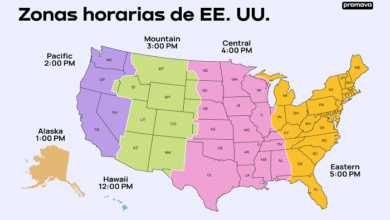Enhancing Education with Aktiv Learning: A Comprehensive Guide

Introduction
Aktiv Learning is transforming the educational landscape by promoting engagement, interaction, and active participation in the learning process. This comprehensive guide delves into the concept of Aktiv Learning, exploring its benefits, methods, and practical applications in both traditional and modern educational environments.
What is Aktiv Learning?
Aktiv Learning is an educational approach that emphasizes active participation, engagement, and hands-on experiences for students. Unlike traditional passive learning methods, Aktiv Learning involves students directly in the learning process, encouraging them to interact with the material, think critically, and collaborate with peers.
The Benefits of Aktiv Learning
Aktiv Learning offers numerous benefits, including improved retention, enhanced critical thinking skills, and increased student motivation. This section discusses how Aktiv Learning can lead to better educational outcomes by making learning more engaging and effective.
How Aktiv Learning Differs from Traditional Learning
Traditional learning often relies on lectures and rote memorization, while Aktiv Learning focuses on interactive and experiential activities. This section compares and contrasts these two approaches, highlighting the advantages of Aktiv Learning over conventional methods.
Implementing Aktiv Learning in the Classroom
Incorporating Aktiv Learning into the classroom requires careful planning and a shift in teaching strategies. This section provides practical tips for teachers on how to implement Aktiv Learning, including designing interactive lessons and using technology to enhance engagement.
Aktiv Learning Strategies for Different Subjects
Aktiv Learning can be applied to a wide range of subjects, from math and science to humanities and arts. This section explores specific Aktiv Learning strategies tailored to different subjects, helping educators create engaging and effective lesson plans.
Technology and Aktiv Learning
Technology plays a crucial role in facilitating Aktiv Learning by providing tools for interactive and collaborative learning experiences. This section discusses various technological tools and platforms that support Aktiv Learning, such as learning management systems, educational apps, and virtual reality.
The Role of Teachers in Aktiv Learning
Teachers are essential to the success of Aktiv Learning. This section explores the changing role of teachers in an Aktiv Learning environment, focusing on how they can facilitate and guide students’ active participation and learning.
Student-Centered Learning in Aktiv Learning
Aktiv Learning is inherently student-centered, meaning that it prioritizes the needs, interests, and abilities of students. This section explains how to create a student-centered learning environment that fosters autonomy and encourages active participation.
Assessing Student Performance in Aktiv Learning
Assessing students in an Aktiv Learning environment requires different approaches than traditional methods. This section discusses various assessment techniques that align with Aktiv Learning principles, such as formative assessments, peer evaluations, and project-based assessments.
Overcoming Challenges in Aktiv Learning
Implementing Aktiv Learning can present challenges, such as resistance to change or limited resources. This section provides strategies for overcoming these challenges and ensuring the successful adoption of Aktiv Learning in any educational setting.
Case Studies of Aktiv Learning Success
Real-life examples of Aktiv Learning in action can provide valuable insights and inspiration. This section highlights case studies of schools and educators who have successfully implemented Aktiv Learning, showcasing the positive impact on student engagement and achievement.
Future Trends in Aktiv Learning
The educational landscape is continuously evolving, and Aktiv Learning is at the forefront of these changes. This section explores future trends in Aktiv Learning, including emerging technologies and innovative teaching methods that are shaping the future of education.
Conclusion
Aktiv Learning represents a significant shift in educational philosophy, focusing on engaging students through active participation and interactive learning experiences. By implementing Aktiv Learning strategies, educators can create dynamic and effective learning environments that promote student success. Embracing Aktiv Learning can lead to a more engaging, motivating, and fruitful educational journey for students.
FAQs
1. What is Aktiv Learning? Aktiv Learning is an educational approach that emphasizes active participation, engagement, and hands-on experiences, encouraging students to interact with the material and collaborate with peers.
2. How does Aktiv Learning benefit students? Aktiv Learning benefits students by improving retention, enhancing critical thinking skills, and increasing motivation, leading to better educational outcomes.
3. What are some strategies for implementing Aktiv Learning in the classroom? Strategies for implementing Aktiv Learning include designing interactive lessons, using technology to enhance engagement, and creating a student-centered learning environment.
4. How can teachers assess student performance in an Aktiv Learning environment? Teachers can assess student performance using formative assessments, peer evaluations, and project-based assessments that align with Aktiv Learning principles.
5. What challenges might educators face when adopting Aktiv Learning, and how can they overcome them? Challenges in adopting Aktiv Learning include resistance to change and limited resources. Educators can overcome these by seeking support, gradually implementing changes, and utilizing available technology and resources.



